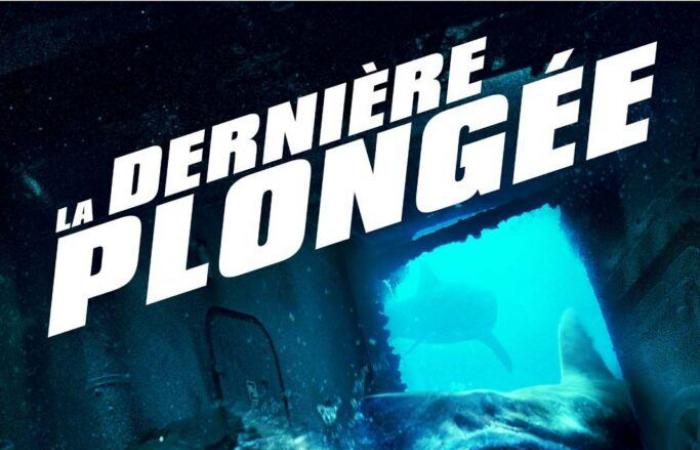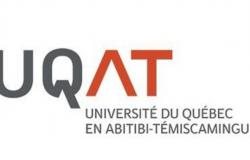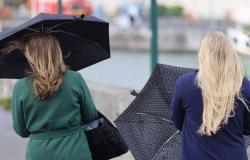The Last Dive // By Joachim Hedén. With Julian Sands, Alexander Arnold and Jack Parr.
Director Joachim Hedén seems to have found his favorite playground: the sea depths. After Breaking Surface in 2020, an effective and rather nice thriller, then The Dive (2023) about two sisters who find themselves trapped rather correct, he returns with The Last Dive (The Last Breath), a film that continues his fascination with underwater survival stories. However, despite a promising initial idea, this new feature film struggles to match the tension and quality of its predecessor. The story follows a group of diving friends who go to explore the wreck of the USS Charlotte. Quickly, their expedition turns into a nightmare.
Five friends meet up to enjoy a party weekend on a beautiful Caribbean island. On a scuba diving excursion among a World War II shipwreck, what they discover exceeds their worst fears: great white sharks are on the prowl. The group finds themselves trapped with little oxygen reserve. They will have to face these predators until their last breath.
Contrary to Breaking Surfacewhich focused on an intense sibling relationship and a fight against the liquid element, The Last Dive introduces an additional threat: sharks, certainly different from the usual great whites, but just as formidable. The scenario manages to stand out thanks to this original threat and a setting rarely explored in underwater cinema. However, the staging fails to maintain a sufficient level of tension. If certain scenes offer decent suspense, they lack the intensity to make the film truly thrilling. We are far from the heights of anxiety that one might expect from such a story. In a diving film, the quality of the aquatic scenes is essential. This is unfortunately one of the weak points of The Last Dive. Where Breaking Surface impressed with clear and immersive images, this new film suffers from underwater shots that are too murky and disordered.
This visual choice not only hinders the readability of the action, but also reduces the emotional impact of critical moments. When the characters fight for survival, viewer immersion is crucial. Here, the messy aspect of the underwater scenes creates a distance, preventing us from fully feeling the urgency and panic of the protagonists. This is all the more unfortunate as the visual potential was there: the exploration of a wreck and the constant threat of sharks could have offered moments of memorable intensity. Another major flaw lies in the characters. While Breaking Surface was based on a strong family dynamic, here, the protagonists are much less endearing. The viewer struggles to become emotionally invested in their plight, largely because they lack depth.
Underwater, it is sometimes difficult to distinguish who is who, which contributes to some confusion at key moments. Outside of the water, their interactions do not allow you to create a strong bond with them either. Some questionable reactions and decisions accentuate this impression of superficiality, even if they do not fall into absolute ridicule. A more positive point of the film lies in its special effects. Without achieving excellence, they are overall convincing. Sharks, while less iconic than the usual great whites, are credible enough to provide a tangible threat. That said, some shots lack polish, suggesting limits in the budget or production choices.
Despite these imperfections, the film avoids descending into kitsch. Compared to other works of the genre, often marked by mediocre special effects or laughable storylines, The Last Dive manages to maintain a certain visual dignity. In the end, The Last Dive is a mixed work. If the initial idea and a few visual elements save the film from total banality, it remains too average an underwater thriller to really make an impression. The tension is correct, but never exceptional, and the artistic choices, particularly for the aquatic scenes, undermine a plot which nevertheless had potential. For fans of survival stories and suspense, the film may be an acceptable distraction, but it is not a must-see.
The Last Dive well illustrates the challenges of the genre: succeeding in combining striking visual immersion, endearing characters and palpable tension. Of these three aspects, he fails to excel in any. Joachim Hedén once again proves his interest in underwater stories, but The Last Dive fails to match the quality of Breaking Surface. Despite decent special effects and an original threat, the lack of depth of the characters and the muddled underwater scenes prevent the film from truly rising. If you are passionate about diving films like me, this one might intrigue you. But for a truly immersive and thrilling experience, it remains preferable to dive back into the director’s previous feature film or, like me, pass your diving levels and actually do some diving.
Note : 4/10. In short, an underwater thriller that lacks depth.
Released on October 31, 2024 directly on VOD






